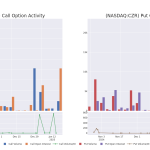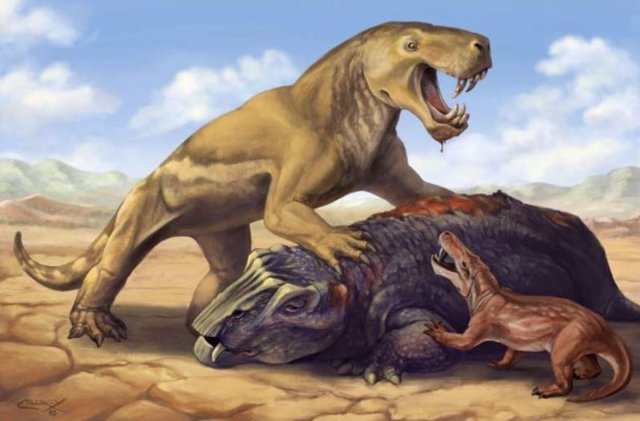May 22. (EUROPE PRESS) –
Fossils of a tiger-sized saber-toothed creature called Inostrancevia, which until now have only been found in Russia, They have also been found in South Africa.
This suggests that it migrated 11,000 kilometers across the supercontinent Pangea during the world’s worst mass extinction, 252 million years ago, the Permian-Triassic Extinction or Great Dying.
His trip to South Africa allowed him to fill a gap in a distant ecosystem that had lost its top predators, say the authors of new research published in the journal ‘Current Biology’.
Two hundred and fifty-two million years ago, the Earth suffered a mass extinction so devastating that it is known as ‘the Great Dying’. Massive volcanic eruptions triggered catastrophic climate change, wiping out nine out of ten species and paving the way for dinosaurs.
But ‘the Great Dying’ was a long farewell: the extinction lasted up to a million years, at the end of the Permian. During that time, the fossil record shows drama and upheaval as species struggled to gain a foothold in their changing environments.
One animal that exemplified this instability was a saber-toothed tiger-sized creature called Inostrancevia: A new fossil discovery suggests that Inostrancevia migrated 11,000 kilometers across the supercontinent Pangea.filling a void in a distant ecosystem that had lost its top predators, before going extinct.
All of the large predators of the late Permian in South Africa went extinct long before the late Permian mass extinction. Pia Viglietti, a research scientist at the Field Museum in Chicago (United States) and co-author of the study, explains that they have discovered that the Inostrancevia “it filled that niche for a brief period of time.”
The prehistoric creature had a ‘top predator’ look. “It was a gorgonopsian, a group of proto-mammals that included the planet’s earliest saber-toothed predators,” Viglietti explains. It was the size of a tiger and probably the skin of an elephant or rhinoceros; Although vaguely reptilian in appearance, it was part of the group of animals that includes modern mammals.
Prior to this new work, Inostrancevia had only been found in Russia, but while examining the fossil record from the South African Karoo basin, Viglietti’s colleague Christian Kammerer, identified the fossils of two large predatory animals different from those normally found in the region.
“The fossils themselves were quite unexpected,” Viglietti said. “It’s unclear how they got from what is now Russia, or how long it took them to cross Pangea and reach what is now South Africa. But being away from home was just one of the elements that made fossils special”.
“When we compared the ranges and ages of the other large predators in the area, the rubidgean gorgonopsians, with these fossils from Inostrancevia, we found something very interesting,” he explains. “In fact, the local carnivores were extinct well before even extinction. main thing we see in the Karoo: By the time extinction begins in other animals, they are already gone.”
The arrival of the Inostrancevia 11,000 kilometers away and its subsequent extinction indicate that these large predators were “canaries in the coal mine” of the great extinction to come.
“This demonstrates that the South African Karoo Basin continues to produce critical data for understanding the most catastrophic mass extinction in Earth’s history,” says Jennifer Botha, co-author of the study, director of the GENUS Center of Excellence in Paleosciences and professor at the Institute for Evolutionary Studies at the University of the Witwatersrand in Johannesburg.
“We have shown that the shift in groups of animals that occupied apex predator roles occurred four times in less than two million years around the Permian-Triassic mass extinction, which is unprecedented in the history of life.” terrestrial,” says Christian Kammerer, first author of the study, curator of paleontology at the North Carolina Museum of Natural Sciences and research associate at the Field Museum.
And he stresses that “this underlines how extreme this crisis was, in which even fundamental ecosystem functions have been subjected to extreme change“.
The vulnerability of these large predators coincides with the current one. “In modern environments, large predators tend to be at high risk of extinction and to be among the first species to be locally extirpated due to human activities such as hunting or habitat destruction,” Kammerer explains.
“Think of wolves in Europe or tigers in Asia, species that tend to breed and grow slowly and require large geographic areas to roam and hunt prey, and are now absent from most of their historical ranges — He continues, “We should expect ancient apex predators to have similar vulnerabilities, and that they were among the species that first went extinct during mass extinction events.”
In addition to shedding new light on the extinction event that contributed to the rise of the dinosaurs, Viglietti notes that the study is important for what it can teach us about the ecological disasters the planet is currently experiencing.
“It’s always good to better understand how mass extinction events affect ecosystems, especially since the Permian is basically a parallel to what we’re experiencing now,” Viglietti explains.
“We don’t really have any modern analogue for what we can expect with the mass extinction that is occurring today, and the Permo-Triassic mass extinction event represents one of the best examples of what we could experience with our climate crisis and the extinctions. I guess the only difference is that we know what to do and how to prevent it from happening.“, he concludes.














![[Img #74853]](https://thelatestnews.world/wp-content/uploads/2025/01/Beginners-Guide-to-iGaming-300x200.jpg)